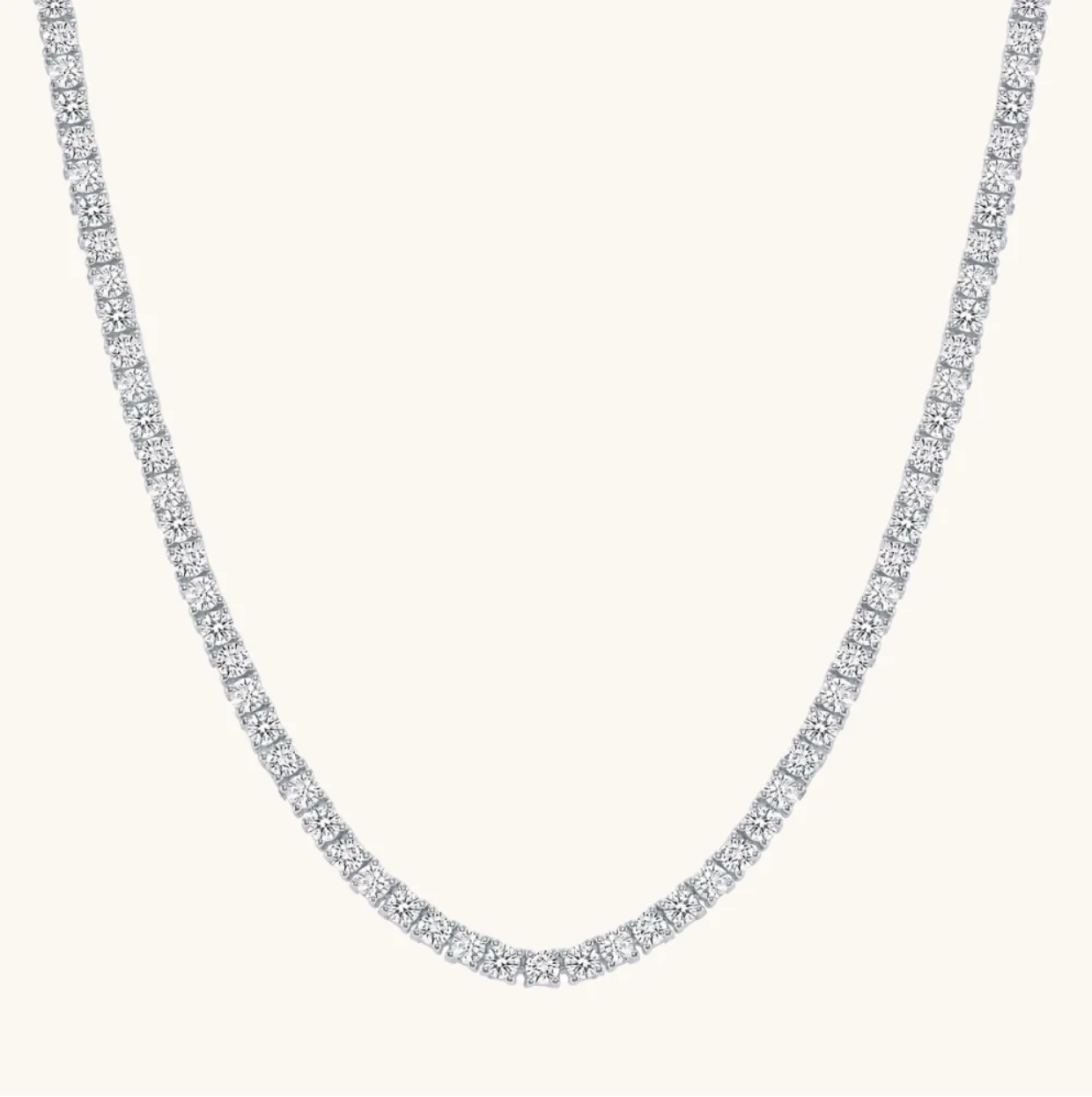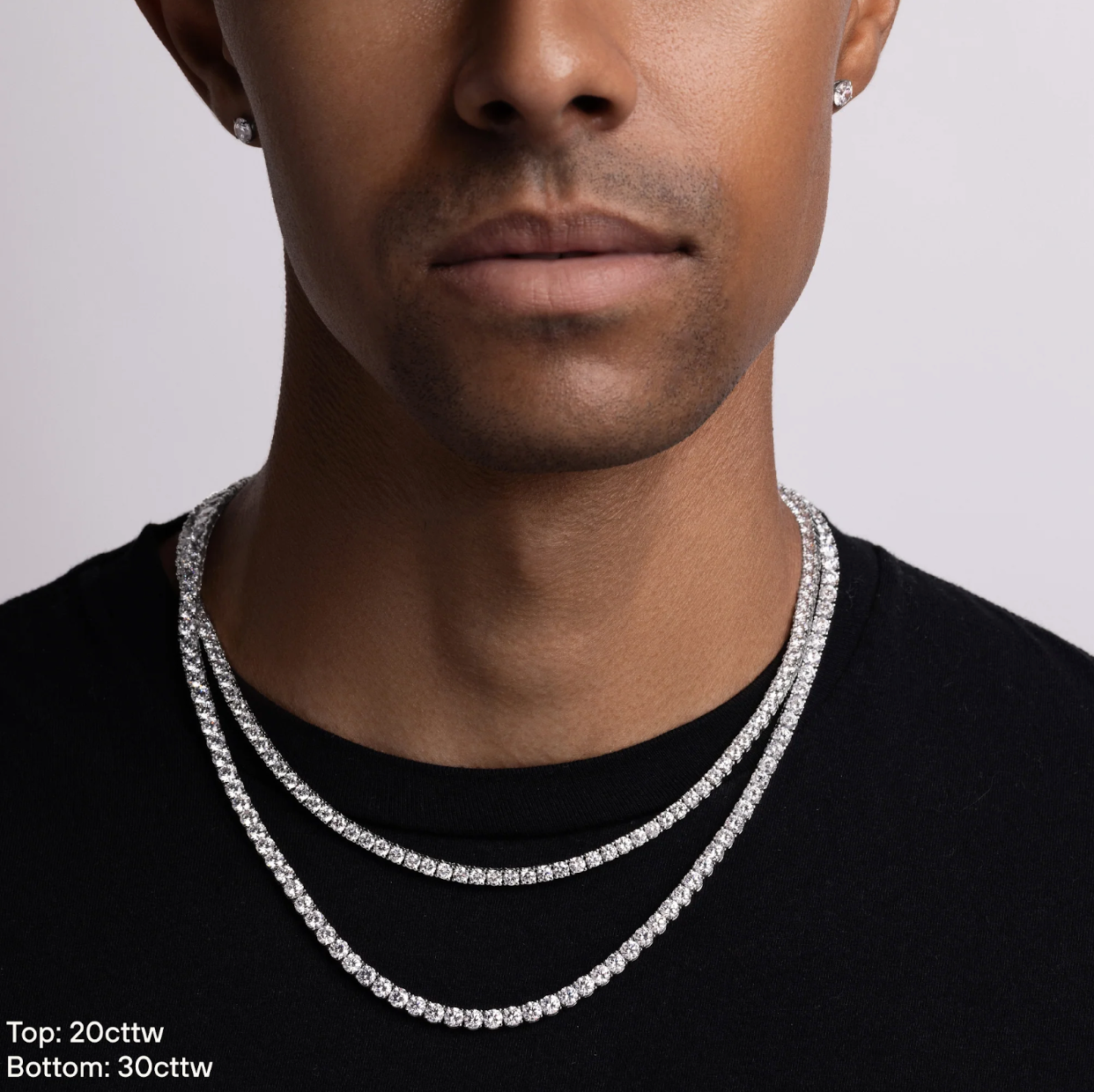When it comes to selecting the perfect engagement ring, choosing between white gold and yellow gold is a crucial decision. Both metals are prevalent, but they differ in appearance, durability, and overall maintenance.
In this guide, we will compare white gold vs. yellow gold engagement rings to help you make an informed decision and select the best metal for your ring.
What Is White Gold?
White gold is a contemporary favorite for engagement rings. It is made by blending yellow gold with metals like palladium, silver, or nickel, and it has a cooler, silvery appearance. To achieve its bright, lustrous finish, white gold is often coated in rhodium, a highly reflective and durable metal.
White gold engagement rings have gained popularity for their modern and sleek look. They often resemble the shine of platinum at a fraction of the cost. White gold is also versatile, complementing a range of gemstones and styles.
White gold's versatility also makes it a favorite choice for various jewelry styles. Whether you prefer a simple solitaire or a more elaborate setting, white gold enhances the brilliance of diamonds and other precious stones, giving your engagement ring a refined, elegant look. Furthermore, white gold works well with cooler-colored stones like sapphires or aquamarines, allowing for creative customization of your ring.
What Is Yellow Gold?
Yellow gold is the classic, timeless choice for engagement rings. This metal, with its warm, rich hue, has been used in jewelry for centuries. It is formed by combining refined gold with other metals, mainly copper, brass, and zinc, to increase its strength.
Yellow gold is often associated with vintage or traditional styles, making it a great option for those who appreciate a romantic, timeless appeal. Many find yellow gold to complement diamonds and colored gemstones beautifully, creating a warm, regal glow.
Additionally, yellow gold’s rich color complements a wide range of skin tones, making it an appealing choice for many. Yellow gold also highlights the color and clarity of diamonds, enhancing their natural beauty. Whether you choose a modern design or a vintage-inspired ring, yellow gold's enduring appeal ensures it will remain a cherished option for years to come.
White Gold vs Yellow Gold Engagement Rings - Key Differences
When selecting between white gold and yellow gold for your engagement ring, several factors come into play. Let’s explore the main aspects to consider:
Appearance
The most obvious difference between white gold and yellow gold is their appearance. White gold has a cool, silvery sheen, which is ideal for those seeking a modern and sophisticated look. On the other hand, yellow gold offers a warm, traditional appearance, exuding timeless elegance.
White gold is often chosen for its sleek and polished look, which pairs well with platinum settings or contemporary designs. Yellow gold, in contrast, radiates warmth and is ideal for vintage-inspired styles. Depending on your aesthetic preference, either can be the perfect choice.
Moreover, choosing between these two metals can also depend on how you want to highlight the gemstones in your ring. White gold tends to create a clean, sharp contrast with diamonds, enhancing their brilliance, while yellow gold can give off a more subtle, blended effect, offering a softer, more classic look. Depending on how you wish to display your center stone, the metal choice can play a pivotal role in achieving the desired aesthetic.
Durability
When it comes to durability, white gold is often considered more resistant to wear and tear due to the rhodium plating, which adds a protective layer to the metal. However, this rhodium coating can wear off over time and may require reapplication every few years to maintain its shiny appearance.
Yellow gold, though softer than white gold, does not need replating but may be more prone to scratches and dents over time. Higher karat yellow gold (18k) is softer than 14k gold, so durability can vary depending on the purity of the gold you choose.
Maintenance
Both white and yellow gold engagement rings require regular care to maintain their beauty. White gold, due to its rhodium plating, will eventually need recoating every few years to restore its lustrous finish, especially if worn daily.
Yellow gold, while easier to maintain since it doesn’t need replating, may show more visible scratches and wear over time, especially in higher karats. Regular polishing can help keep yellow gold rings looking their best, but the natural wear can also give them a vintage, worn-in look that some people appreciate.
Price
When comparing the cost of white gold vs. yellow gold engagement rings, it’s important to note that both metals are generally priced similarly, as they both contain the same amount of pure gold. However, white gold can be slightly more expensive due to the additional rhodium plating required to achieve its signature shine.
In general, the price difference between white and yellow gold comes down to factors such as karat weight and design intricacy rather than the metal itself. Custom designs, the type of gemstones, and the amount of gold used will also influence the final price.
Choosing the Right Metal for Your Engagement Ring
Now that we’ve explored the key differences between white and yellow gold, how do you choose the right one for your engagement ring? Here are some factors to consider:
Skin Tone
Your skin tone can play a significant role in choosing between white and yellow gold. White gold tends to complement cooler skin tones, while yellow gold pairs beautifully with warmer or olive skin tones. However, personal style preference is just as important, and there’s no wrong choice when selecting what looks best on you.
Style and Aesthetic
If you prefer a modern, sleek, and polished look, white gold may be the best choice. Its cool, silvery appearance is often favored in contemporary designs. On the other hand, if you gravitate toward vintage-inspired or traditional aesthetics, yellow gold may better suit your style, offering a classic, romantic appeal.
Longevity and Maintenance
Consider the maintenance requirements of each metal. White gold will need re-plating every few years, while yellow gold may develop scratches that give it a vintage charm. If you’re looking for a metal that requires minimal upkeep, yellow gold may be the better option. However, if you love the idea of a sleek, shiny ring, white gold can give you the modern edge you’re looking for.
Yellow Gold vs White Gold: What’s the Best Choice for You?
Ultimately, the decision between white gold and yellow gold comes down to personal preference and lifestyle considerations. Both metals offer distinct beauty and benefits, so choosing the right one depends on your individual needs.
White gold is sleek, modern, and highly reflective, making it an ideal choice for those who want a contemporary, elegant look. Yellow gold, on the other hand, is warm, romantic, and classic, perfect for those seeking a traditional or vintage-inspired engagement ring.
No matter which metal you choose, your engagement ring is a timeless symbol of love that will last a lifetime. Whether you prefer the cool elegance of white gold or the timeless warmth of yellow gold, the key is to pick the metal that speaks to your personal style and will bring you joy for years to come.
One popular option from Happy Jewelers is the 14K White Gold hidden Halo Engagement Ring. This elegant engagement ring features a 2.00-2.99 carat radiant-cut diamond set in your choice of 14K white or 14K yellow gold. It also includes a hidden halo design that adds subtle brilliance and enhances the center stone’s sparkle, making it perfect for those who love a modern and refined look.
Another standout piece from the Happy Jewelers collection is the 18K Yellow Gold with Oval-cut diamond engagement ring. This stunning engagement ring features a 3.00-carat oval lab-grown diamond set in 18K yellow gold.
The hidden halo design adds extra sparkle while maintaining a sleek, elegant look. The warm tones of yellow gold beautifully complement the diamond, making it a perfect choice for those who appreciate a blend of modern and classic aesthetics.
Wrapping Up
Choosing between white gold and yellow gold for an engagement ring is a matter of personal taste, lifestyle, and style preference. Both metals offer unique advantages, and neither choice is inherently better than the other.
Whether you prefer the sleek and modern look of white gold or the warm, classic appeal of yellow gold, your engagement ring will be a lasting symbol of love and commitment.
Ready to choose your perfect engagement ring? Explore our stunning collection of white and yellow gold engagement rings to find the perfect symbol of your love.





Share:
Eternity Band vs Wedding Band: What’s the Difference?
Are Lab Grown Diamonds Real?